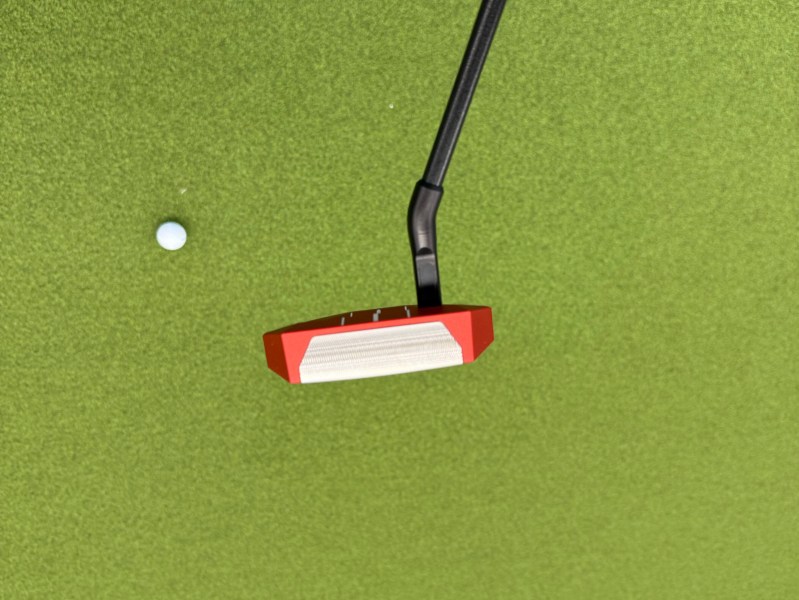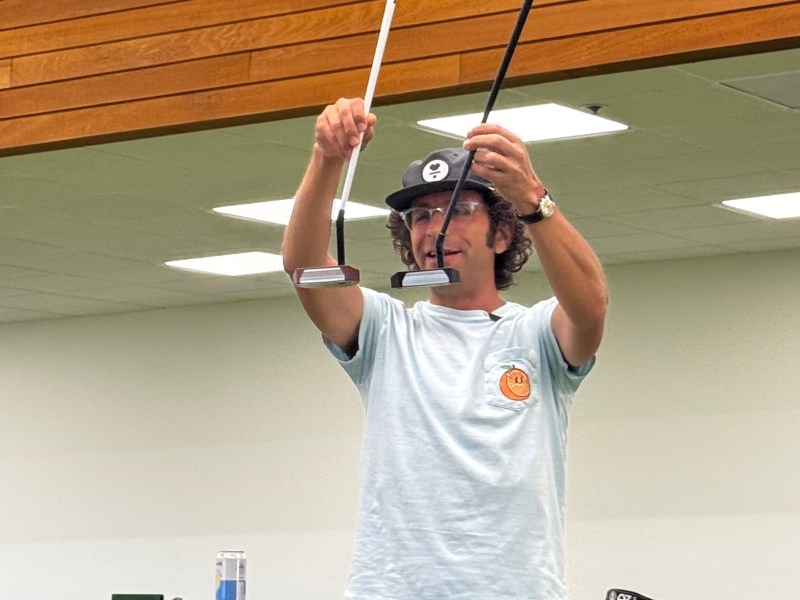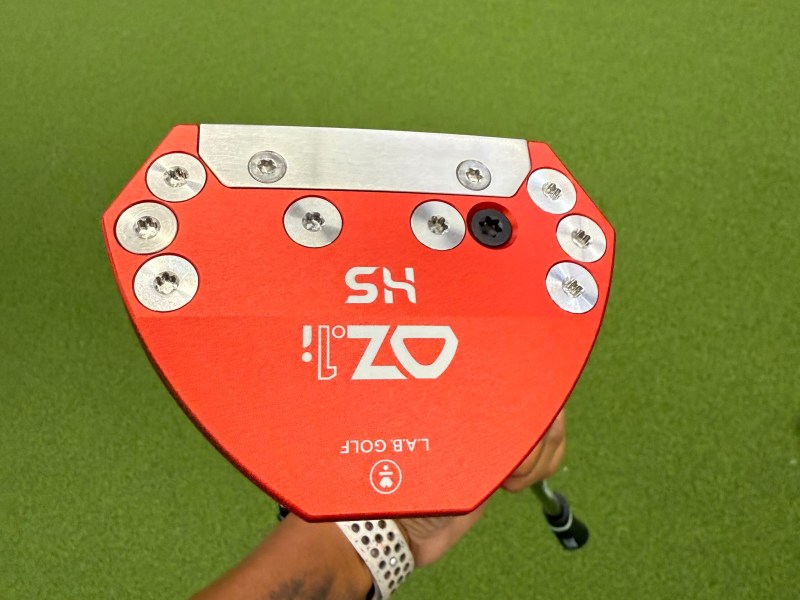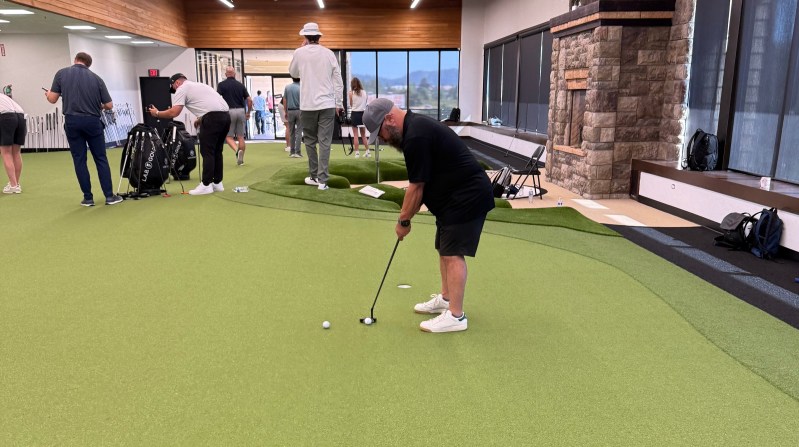When I stepped onto the green at Emerald Valley Golf Club with the new L.A.B. Golf OZ.1i HS in hand, I didn’t expect much of a change from the Mezz.1 Max that I already own. I already believe in the company’s tech, so I figured this would just be another iteration. But within a couple of rolls, I realized something surprising: this wasn’t just another putter, let alone another L.A.B. putter.
The OZ.1i HS, L.A.B.’s first heel-shafted putter built with Lie Angle Balance, feels like a fundamental shift in how we think about putting.
A company built on clarity
L.A.B. Golf didn’t burst onto the scene with giant Tour endorsements or flashy marketing. They started in a cramped factory in Eugene, Oregon, where a small crew built putters by hand and shipped them out as fast as they could make them.
Things changed in 2022, when YouTube reviewers like Rick Shiels and Peter Finch featured their putters. Overnight, the business tripled. Suddenly, a team of ten or twelve was scrambling to decide what kind of company they were going to be.
Even headcovers sparked debate. CEO Sam Hahn admitted he hated them.
“Our mission isn’t just to make golf more fun,” Hahn told us during a media day I attended in August. “We want to make the game easier. And when the game gets easier, the fun follows.”
That philosophy still guides the brand today: no gimmicks, no distractions — just performance that helps golfers roll the ball better.
What Lie Angle Balance really means

Most putters twist during the stroke, and golfers fight that torque with their hands. Lie Angle Balance changes that. By balancing the head to the shaft’s lie angle, the OZ.1i HS is designed to stay square to your setup instead of working against it.
While some people casually call this “zero torque,” Hahn and his team stressed that true zero torque isn’t possible. Their point was clear: Lie Angle Balance minimizes torque in a way that helps the putter work with your natural stroke, not against it. If you want a visual representation, check out L.A.B.’s video demonstrating Lie Angle Balance.
The riser that makes it possible
The challenge of a heel-shafted putter is simple: move the shaft to the heel, and suddenly the putter feels hot on one side and dead on the other.
L.A.B.’s answer was a proprietary aluminum riser. By replacing the usual steel hosel with lightweight aluminum, they kept mass distribution in check and maintained balance across the face.
The riser is offered in lie angles from 65° to 74°, giving fitters the ability to dial in a golfer’s setup. Because it’s modular, golfers can replace it if their setup changes without needing a whole new putter.
Customization vs. personalization

During our tour, Hahn drew a line between customization and personalization. Customization, he explained, is about performance: lie angle, shaft, length, weight, grip. The OZ.1i HS handles that through its modular riser system, which means you can keep the same head balanced to your stroke even if your specs evolve.
Personalization, on the other hand, is about style. L.A.B. is working on alternate face inserts (smooth, grooved, deep-milled, even carbon), as well as new riser colors and sightline choices. The goal is to keep the performance foundation intact while giving golfers more ways to make the putter their own.
And that leads naturally to the most important question: how does it feel?
The face that changes everything

The OZ.1i HS uses a fly-milled stainless steel insert instead of the aluminum face found in some other L.A.B. models. According to the company, this change produces a firmer sound, more feedback, and slightly faster ball speed — about 4–6% in their testing.
From my perspective, the change was clear in sound and feel. Compared to my Mezz.1 Max, the OZ.1i HS felt firmer and gave me immediate feedback on whether I’d struck the putt cleanly. Don’t get me wrong, the Mezz.1 Max was my favorite putter until I got my hands on the OZ.1i. The OZ.1i just increases the bar even higher.
L.A.B.’s engineers also emphasized that pairing the stainless steel face with the aluminum riser was intended to deliver more consistent roll across the face, even on off-center strikes.
My round at Emerald Valley

The best way to test a putter is under pressure, even if it’s casual pressure. I played 18 holes at Emerald Valley with Zak Kozuchowski (founder of Rooted Solutions) and Tip Voungbouthdy from The Manual.
On the first hole, I made par. On the second, I dropped a 20-footer for birdie. It had been a while since I made one from that range. Both Zak and Tip gave some positive comments, and my confidence snowballed from there. You see, I haven’t had an opportunity to golf much recently since I’m still recovering from knee surgery. I was playing with zero expectations of a normal round for myself.
But my putting had a mind of its own:
- Inside six feet: Putts felt automatic. I didn’t overthink stroke mechanics; I trusted the read.
- Long putts: Distance control felt natural right away. I focused on speed and slope, and the ball kept finishing near the hole.
No quirks, no bad surprises. Just a smooth feel that let me focus on playing golf instead of fighting mechanics.
The story didn’t end there. Tip went on to win his club championship the next weekend and when we talked afterward, he credited the OZ.1i HS, saying: “It was all because of the putter.”
Why it matters
The OZ.1i HS bridges a gap. It brings L.A.B.’s Lie Angle Balance to golfers who prefer a heel-shafted look. It removes excuses for skeptics who liked the idea of the technology but couldn’t get past the center-shaft visuals.
And it’s not just for elite players like J.J. Spaun, Adam Scott, Will Zalatoris, Lucas Glover of the PGA. By simplifying the stroke, it makes putting more approachable for all golfers, and I would say even for beginners.
As Hahn put it:
“We listened. This looks familiar and balances just as well as any center shaft.”
Price and availability
The OZ.1i HS is available now at L.A.B. Golf’s official site. Stock models start at $499, and custom builds begin at $599. Each one is built by hand, and remote fitting options are available if you can’t get to a fitter. I’d recommend getting fitted, even if it is remote.
Final thoughts
This isn’t just another new release. For me, it felt like a moment of excitement. The kind of product that makes you rethink a part of the game you thought you understood, and then realize you actually always battled with. Always having to warm up for 15 minutes on the green before a round and making adjustments to your swing.
After a day with the OZ.1i HS, I left convinced it’s the most natural-feeling L.A.B. putter yet. There is just so much less I had to adjust my swing for. No more putter swing thoughts. Just fun.




